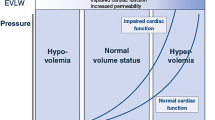Abstract
The accuracy of pulse oximeters from fourteen manufacturers was tested during profound brief hypoxic plateaus in 125 subject sets using 50 normal adult volunteers, of whom 29 were studied two to nine times. A data set usually consisted of 10 subjects, and 13 sets were collected between August 1987 and July 1988. In the first 6 sets, six 30-second hypoxic plateaus were obtained per subject at 55±6% oxyhemoglobin (O2Hb) (range, 40 to 70%). In the last 7 sets, three hypoxic plateaus were obtained at each of four levels, approximately 86, 74, 62, and 50% O2Hb, for the purpose of linear regression analysis. Inspired oxygen was adjusted manually breath by breath in response to arterial oxygen saturation computed on-line from end-tidal oxygen and carbon dioxide tensions. End-plateau arterial blood O2Hb was analyzed by a Radiometer OSM-3 oximeter, and plateau pulse oximeter saturation (SpO2) was read by cursor from a computer record of the analog output. Three to 13 instruments were tested simultaneously by using 1 to 3 duplicate instruments from each of one to seven manufacturers. Variations introduced by manufacturers were tested on subsequent sets in several instruments. An index of error, “ambiguity” (α) of oxygen saturation, was defined as the absolute sum of bias and precision (mean and SD of SpO2−O2Hb) at O2Hb=55.8±4.5%, preserving the sign when bias was significant atP<0.05. Ambiguity values for finger probes (unless specified) with latest data were: Physio-Control, 3.9 (ear, 3.3); Puritan-Bennett, −4.4; Criticare, 5.8 (forehead, 4.7); Kontron, 5.9 (infant probe) and 6.1 (ear, 5.8; forehead, 7.1); Biochem, −6.0; Datex 6.4 (ear, 6.9; forehead, 6.8); Critikon, 8.4; SiMed, 8.6; Marquest, 9.0; Novametrix, 10.2; Invivo, −12.2 (ear, −14.3); Nellcor, −15.1; Ohmeda, −21.2; and Radiometer, −21.2 (ear, −9.6). Linear regression slopes of 36 instruments from twelve manufacturers generally deviated from 1 in proportion to α. The data showed substantial differences in bias and precision between pulse oximeters at low saturations, the most common problems being underestimation of saturation and failing precision.
Similar content being viewed by others
References
Mihm FG, Halperin DH. Noninvasive detection of profound arterial desaturations using a pulse oximetry device. Anesthesiology 1985;62:85–87
Chapman KR, Liu FLW, Watson RM, Rebuck AS. Range of accuracy of two wavelength oximetry. Chest 1986;89:540–542
Kagle DM, Alexander CM, Berko RS, et al. Evaluation of the Ohmeda 3700 pulse oximeter: steady state and transient response characteristics. Anesthesiology 1987;66:376–380
Miyasaka K, Katayama M, Kusakawa I, et al. Use of pulse oximetry in neonatal anesthesia. J Perinatol 1987;7:343–345
Jones J. Continuous emergency department monitoring of arterial saturation in adult patients with respiratory distress. Ann Emerg Med 1988;17:463–468
Sendak MJ, Harris AP, Donham RT. Accuracy of pulse oximetry during arterial oxyhemoglobin desaturation in dogs. Anesthesiology 1988;68:111–114
Yelderman M, New W Jr. Evaluation of pulse oximetry. Anesthesiology 1983;59:349–352
Lazzell VA, Jopling MW. Accuracy of pulse oximetry in cyanotic congenital heart disease. Anesthesiology 1987;67:A169
Boxer RA, Gottesfeld I, Singh S, et al. Noninvasive pulse oximetry in children with cyanotic congenital heart disease. Crit Care Med 1987;15:1062–1064
Severinghaus JW, Naifeh KH. Accuracy of response of six pulse oximeters to profound hypoxia. Anesthesiology 1987;67:551–558
Author information
Authors and Affiliations
Rights and permissions
About this article
Cite this article
Severinghaus, J.W., Naifeh, K.H. & Koh, S.O. Errors in 14 pulse oximeters during profound hypoxia. J Clin Monitor Comput 5, 72–81 (1989). https://doi.org/10.1007/BF01617877
Received:
Revised:
Accepted:
Issue Date:
DOI: https://doi.org/10.1007/BF01617877




